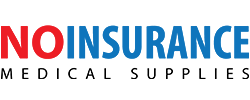In the past, patients who thought they might have sleep apnea had to schedule an overnight stay at a sleep lab to confirm their diagnosis. The monitoring equipment that would allow doctors to determine the severity of a person’s sleep apnea was simply not available outside the lab.
For many, this presented an additional stumbling block in getting a much-needed diagnosis. Despite being linked to high blood pressure, depression and anxiety, increased risk for stroke, and other serious medical conditions, obstructive sleep apnea often goes undiagnosed. The added trouble of an overnight stay at a medical lab was often just one more reason someone might decide getting tested wasn’t worth it.
Nowadays, however, testing has changed and improved to the point where people who suspect they may have sleep apnea can often get tested from the comfort of their own homes. Using these tests to determine if a CPAP machine is right for you could help you overcome ongoing feelings of fatigue and enjoy a higher quality of life.
How At-Home Testing Works
An at-home sleep apnea test serves as a convenient (and less expensive) alternative to a standard seep laboratory test. In fact, it is estimated that while a home-based test may cost as little as $150, an overnight sleep test at a lab will frequently exceed $1,000 — a significant savings.
These tests also have the advantage of being easier to fit with your own schedule, and in the comfort of your own bed. While you may have to wait for the testing equipment to show up so you can use it, many people find these trade-offs to be well worth it.
So how do the at-home tests work? Writing for the Harvard Health Blog, Julie Corliss explains, “For the test, you’ll get a small, lightweight monitor, a belt you slip around your midsection, a small finger clip that monitors your oxygen, and an airflow sensor to place under your nose. These sensors and devices measure your oxygen saturation, heart rate, and airflow, as well as the movements of your chest and abdomen and your position while you sleep.”
These readings will allow sleep specialists to determine whether you have obstructive sleep apnea, while also measuring your apnea-hypopnea index (AHI). This is a measurement of how many interruptions to your breathing occur each hour. An AHI of 30 or more indicates severe obstructive sleep apnea, while a measurement of 15 to 30 is moderate, and 5 to 15 is mild.
Because of the relatively small size of the equipment used for these studies, the Harvard article notes that as many as 60 to 70 percent of all sleep apnea diagnostic testing is now performed at home. Though not always accurate for individuals with mild symptoms, home testing is generally quite accurate for moderate and severe sleep apnea.
How Can You Tell if You Should Get Tested?
While knowing that testing is more accessible and affordable than ever is certainly a positive for many, you might be unsure about whether or not you should get tested for sleep apnea in the first place. Symptoms of sleep apnea aren’t always easy to detect, but being on the lookout for a few key warning signs will help you know if you should get tested.
Snoring is a common symptom of sleep apnea — so pay attention if your partner says you snore often. Your partner may also notice you gasping for breath or making choking sounds during the night, as well as periods when you seem to stop breathing. These are all common indicators of sleep apnea that you probably wouldn’t notice on your own.
You should also pay close attention to your energy levels. Feeling tired after a single poor night’s sleep isn’t that unusual. But if you are consistently fatigued during the day, even after you seemingly enjoyed a full night’s rest, you may have obstructive sleep apnea. Other common warning signs include headaches in the morning, and increased moodiness stemming from being tired all the time. If you also have high blood pressure, sleep apnea could be to blame.
Certain factors also put you at a higher risk for developing sleep apnea. Individuals with a BMI over 30 and a neck circumference greater than 16 inches (for women) or 17 inches (for men) are more likely to experience sleep apnea. Men, individuals over the age of 50, and those with a family history of sleep apnea are also at a higher risk. If you meet these criteria and feel tired all the time, a sleep apnea test may be in order.
Sleep Better With CPAP Therapy
If you suspect that you or your partner may be struggling with obstructive sleep apnea, schedule testing as soon as possible. Getting a diagnosis and beginning CPAP therapy will help you and your spouse sleep better, avoiding the negative long-term consequences of chronic fatigue.
Of course, if you don’t have health insurance, the testing process and obtaining CPAP equipment can feel like a major financial obstacle. The good news is that it doesn’t have to be. Here at No Insurance Medical Supplies, we offer CPAP and BiPAP equipment from leading brands like ResMed and Philips Respironics at discounted prices to help you save on the supplies you need.
We also offer financing through CareCredit and TimePayment on select purchases to make your equipment even more affordable. Our friendly team is readily available to chat online or by phone to address any additional questions or concerns you might have. Better sleep is closer than you might think!


